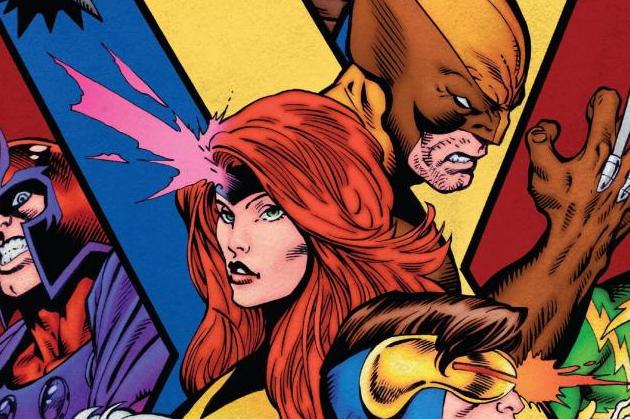History of the Marvel Universe #5 Review
Author: Mark Waid
Artist: Javier Rodriguez
Publisher: Marvel Entertainment
History of the Marvel Universe reaches the 2000s in Issue #5, which means one thing: the age of huge crossover events has begun. But before getting into that, here's a brief recap, since #4 was a while ago. It's nearly the heat death of the universe, and the only beings left alive are Franklin Richards and Galactus. Since he was there since the beginning, and Franklin is the only one that will retain his memory after the next universe is born, Galactus is retelling the history of the universe to him. Issue #1 focused on ancient history, #2 focused on Earth history before the 21st Century, #3 focused on the early era of Marvel in the 60s and 70s, and #4 focused on the 80s and 90s.
Issue #4 kicks off with the founding of the Thunderbolts, and the resulting crossover events that took place surrounding their story. Next, we learn about the mutant genocide at Genosha (which is particularly relevant now because of Hickman's X-Men run). After a few more origin stories (like the Runaways and Jessica Jones), the issue focuses on Avengers Disassembled and House of M for a while. This issue is right in the thick of some of the most famous crossovers in Marvel, so the issue feels really quick. Right after House of M, it jumps into Civil War and World War Hulk. After that, we learn about the birth of the Guardians of the Galaxy from Annihilation, and the following Secret Invasion.
After that bombardment of crossovers, the issue slows down a little with the exposition I'm used to from the series. It talks about Norman Osborn becoming Iron Patriot, Cable and Hope Summers returning to jumpstart the Mutant population, and Red Skull's return. The issue ends off on a couple more big events, primarily Captain America's return and the beginning of the next age of heroes (because of the Registration Act being repealed, Ms. Marvel becoming Captain Marvel, Nick Fury Jr forming a secret spy group, the Spider-Island event, Avengers vs X-Men, and Age of Ultron.
This issue was really good. Just like the last issues, it did a really good job of explaining the complicated mess that is Marvel Comics in a way that makes sense. Unfortunately, it's starting to become a little much. The issue is just sooooo dense with information. It would've been easier to read if Waid had gotten a few more issues of the series, and more room for the series to breathe as a result. But that's a minor complaint, I'm still really enjoying the series, and the art is still ridiculously good. It does a great job of simultaneously looking like modern comic art and classic 60s comic art. Only one more issue to go! And it might be the longest, considering how much happened in the comics released from 2013 to now!
Artist: Javier Rodriguez
Publisher: Marvel Entertainment
History of the Marvel Universe reaches the 2000s in Issue #5, which means one thing: the age of huge crossover events has begun. But before getting into that, here's a brief recap, since #4 was a while ago. It's nearly the heat death of the universe, and the only beings left alive are Franklin Richards and Galactus. Since he was there since the beginning, and Franklin is the only one that will retain his memory after the next universe is born, Galactus is retelling the history of the universe to him. Issue #1 focused on ancient history, #2 focused on Earth history before the 21st Century, #3 focused on the early era of Marvel in the 60s and 70s, and #4 focused on the 80s and 90s.
Issue #4 kicks off with the founding of the Thunderbolts, and the resulting crossover events that took place surrounding their story. Next, we learn about the mutant genocide at Genosha (which is particularly relevant now because of Hickman's X-Men run). After a few more origin stories (like the Runaways and Jessica Jones), the issue focuses on Avengers Disassembled and House of M for a while. This issue is right in the thick of some of the most famous crossovers in Marvel, so the issue feels really quick. Right after House of M, it jumps into Civil War and World War Hulk. After that, we learn about the birth of the Guardians of the Galaxy from Annihilation, and the following Secret Invasion.
After that bombardment of crossovers, the issue slows down a little with the exposition I'm used to from the series. It talks about Norman Osborn becoming Iron Patriot, Cable and Hope Summers returning to jumpstart the Mutant population, and Red Skull's return. The issue ends off on a couple more big events, primarily Captain America's return and the beginning of the next age of heroes (because of the Registration Act being repealed, Ms. Marvel becoming Captain Marvel, Nick Fury Jr forming a secret spy group, the Spider-Island event, Avengers vs X-Men, and Age of Ultron.
This issue was really good. Just like the last issues, it did a really good job of explaining the complicated mess that is Marvel Comics in a way that makes sense. Unfortunately, it's starting to become a little much. The issue is just sooooo dense with information. It would've been easier to read if Waid had gotten a few more issues of the series, and more room for the series to breathe as a result. But that's a minor complaint, I'm still really enjoying the series, and the art is still ridiculously good. It does a great job of simultaneously looking like modern comic art and classic 60s comic art. Only one more issue to go! And it might be the longest, considering how much happened in the comics released from 2013 to now!





